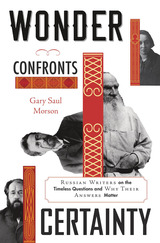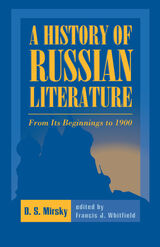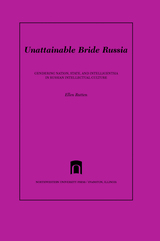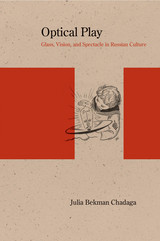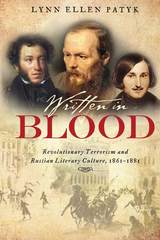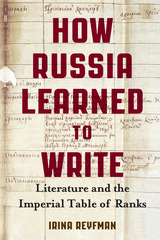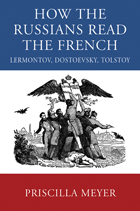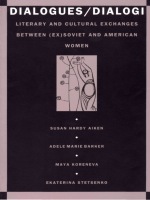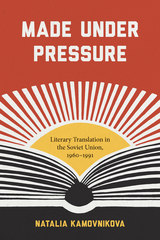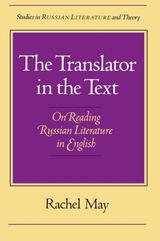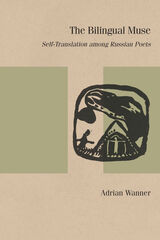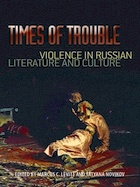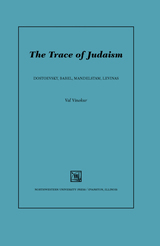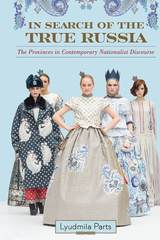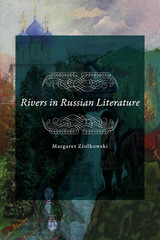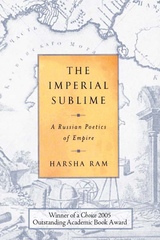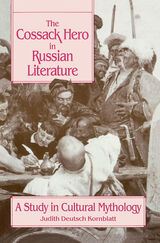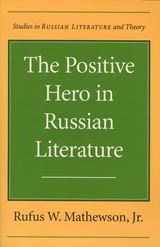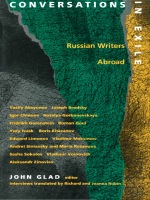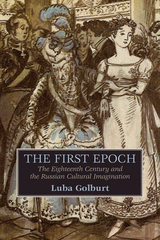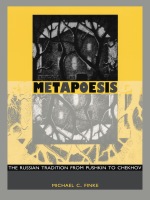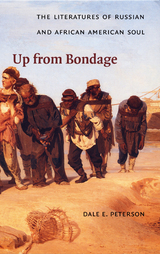Cloth: 978-0-299-22430-1
Library of Congress Classification PG2986.T46 2007
Dewey Decimal Classification 891.7093552
From the country that has added to our vocabulary such colorful terms as "purges," "pogroms," and "gulag," this collection investigates the conspicuous marks of violence in Russian history and culture.
Russians and non-Russians alike have long debated the reasons for this endemic violence. Some have cited Russia's huge size, unforgiving climate, and exposed geographical position as formative in its national character, making invasion easy and order difficult. Others have fixed the blame on cultural and religious traditions that spurred internecine violence or on despotic rulers or unfortunate episodes in the nation's history, such as the Mongol invasion, the rule of Ivan the Terrible, or the "Red Terror" of the revolution. Even in contemporary Russia, the specter of violence continues, from widespread mistreatment of women to racial antagonism, the product of a frustrated nationalism that manifests itself in such phenomena as the wars in Chechnya.
Times of Trouble is the first in English to explore the problem of violence in Russia. From a variety of perspectives, essays investigate Russian history as well as depictions of violence in the visual arts and in literature, including the works of Fyodor Dostoevsky, Isaac Babel, Mikhail Lermontov, and Nina Sadur. From the Mongol invasion to the present day, topics include the gulag, genocide, violence against women, anti-Semitism, and terrorism as a tool of revolution.
Marcus C. Levitt is associate professor of Slavic languages at the University of Southern California. Tatyana Novikov is associate professor of Russian at the University of Nebraska at Omaha.
"The first book of its kind to address head-on the problem of violence in Russian culture."—Angela Brintlinger, Ohio State University
Contents
Preface 000
Introduction. Times of Trouble: The Consciousness of Violence in Russian History and Culture 000
Marcus C. Levitt
The Scourge of God: The Mongols and Violence in Russian History 000
Charles J. Halperin
Violent Outcomes: Mikhail Lermontov and Romanticism's Insoluble Problems 000
David Powelstock
The Spectacle of the Scaffold: Performance and Subversion in the Execution of the Decembrists 000
Ludmilla A. Trigos
The Invisible Scaffold: Execution and Imagination in Vasilii Zhukovskii's Works 000
Ilya Vinitsky
The Wounded Young Heart: Dostoevsky's Netochka Nezvanova as Bildungsroman 000
Elena Krasnostchekova
Violence and the Word: Dostoevsky 000
Harriet Murav
Nihilists and Terrorists 000
Daniel Brower
Violence and the Legacy of "Bakuninism" in the Russian Revolution 000
Frank J. Goodwin
On Blood, Scandal, Renunciation and Russian History: Ilya Repin's "Ivan the Terrible and His Son" 000
Kevin M. F. Platt
Alimentary Violence: Eating as a Trope in Russian Literature 000
Ronald LeBlanc
Russian-Jewish Writers Face Pogroms (1881-1917) 000
Brian Horowitz
The Origins of Soviet State Terrorism: 1917-1921 000
Anna Geifman
The Problem of Revolutionary Violence in Isaac Babel's Stories 000
Victor Peppard
State Violence in the Stalin Period 000
J. Arch Getty
The Struggle against Treason: The Great Purges of 1936-38 in the Mirror of the Oprichnina 000
Maureen Perrie
A Substitute for Writing: Representation of Violence in Incidents by Daniil Kharms 000
Mark Lipovetsky
The Sadists' Club: Struggling with the Legacy of Stalinism in Vasilii Aksenov's The Burn 000
Nina Efimov
Circles of Hell, Circles of Life: Two Responses to Violence in Gulag Memoirs 000
Natasha Kolchevska
Violence in Victor Astaf'ev's Fiction 000
Julian D. Moss
Death and the Maiden: Erasures of the Feminine in the Soviet Literature of the Fin- de-siècle 000
Nadya L. Peterson
Violence in Modern Russian Utopia and Anti-Utopia 000
Boris Lanin and Elena Vassileva
The Female Face of Violence: Russian Culture and Violence against Women 000
Teresa L. Polowy
Angry Women's Voices: Revenge Fantasies in Nina Sadur's Stories 000
Tatyana Novikov
Violence, Madness, and the Female Grotesque in Nina Sadur's The South and Svetlana Vasilenko's Little Fool 000
Elizabeth Skomp
Chechen War Memoirs and Nationalist Identity in Contemporary Russia 000
Anna Brodsky
Contributors 000
Index 000
<new recto>
Preface
The escalating violence of the modern world has increasingly begun to dominate the national consciousness, and is causing a dramatic shift in the American view of the world. The premise underlying the discussions in this book is that much can be learned from investigating violence in literature and culture, a process that can foster a better grasp of the phenomenon. The book represents one of the first studies dedicated to addressing the problem of violence in Russia. While Russia surely has no exclusive claim to violence, the problem of violence has been a constant concern throughout its history, as the essays in the volume show. Nevertheless it is hard to gainsay the fact that the Russian twentieth century was arguably the bloodiest epoch in world history (second only in numbers to the black plague of the fourteenth century, although that was a natural rather than man-made catastrophe like in Russia); this was the age that contributed such terms as "pogrom," "purges," and "Gulag" to our everyday discourse, and there are those who argue that the problems of ideological violence and terrorism today have their roots in the Russian (and especially Soviet) experience.
This volume offers a spectrum of analyses of violence in Russian history, literature and culture. Topics include capital punishment; violence in war; in government conflicts and revolutions; against ethnic groups-Jews and Chechens; in concentration camps; and against women; as well as violence as an ingrained problem in human society and culture. The works of fiction and art analyzed by the authors of this volume exhibit a rich diversity, and include historical narratives, classical, absurdist, post-modern, and feminist fiction, web-posted memoirs, as well as painting and art criticism. Historical essays explore specific periods of Russian history that have been particularly marked with violence, starting with problem of the impact of Mongol invasion on Russian culture, and especially focused on tracing the tradition of modern political violence in Russia from nineteenth century "nihilism" through the present day. In the process, the articles explore national identity and raise matters of responsibility, effect and redemption on personal, communal and national levels.
Arranged chronologically, the article by prominent American and European scholars cover a wide range of historical periods, writers, materials and issues, recognizing and stressing the thematic centrality of violence in Russian literature and culture. The volume is designed to address the ongoing need for college-level materials on the topic of violence, and is to some degree a synthesis of current scholarship, but it is hoped that it may also find an audience both among enthusiasts of Russian history and culture, and stimulate the work of specialists. We hope that the volume will find a niche in courses on Russian literature, history, culture, as well as for those on more specialized courses on topics such as violence in Russian culture, terrorism in Russia, women in Russian culture, and others.
Transliteration from the Cyrillic to the Latin alphabet is a perennial problem. The editors have used a modification of the Library of Congress system in the text, substituting standardized American spelling for well known names (e.g., Dostoevsky instead of Dostoevskii, Archangel instead of Arkhangel'sk).
The editors would like to thank the reviewers of the University of Wisconsin Press for their comments and helpful suggestions on an earlier draft of this book. We would also like to thank all the participants for their contributions to the current volume. Lastly, our special thanks go to the University of Southern California, the University of California, Davis, Washington and Lee University, Brandeis University, University of Arizona, University of Pennsylvania, University of Illinois, Urbana-Champaign, University of New Hampshire Center for the Humanities and the College of Liberal Arts, and many anonymous donors for generous financial support in the preparation and production of this volume.
Times of Trouble
Introduction
Times of Trouble: The Consciousness of Violence in Russian History and Culture
Marcus C. Levitt
There is something in our blood that resists all real progress. In a word, we have lived, and live now merely to furnish some great lesson to a remote posterity.
Peter Chaadaev, First Letter on the Philosophy of History
"Of course you are right when you say that it is not new . . . but what is really original in it . . . is that you uphold bloodshed as a matter of conscience . . ."
Razumikhin on Raskolnikov's theory of the superman, in Dostoevsky's Crime and Punishment
Russia offers a most favorable soil for the experiments and fantasies of the artist, though his lot as a human being is sometimes terrible indeed.
Andrei Siniavskii, A Voice from the Chorus
Human beings are remarkably brutal creatures, but Russian culture, it seems, has been particularly and emphatically marked by violence. Russians and non-Russians have long debated the reasons for the country's endemic violence and the factors that shaped what Vladimir Nabokov called "a country famous for its misfortunes."1 Some have cited Russia's unforgiving climate as something that determined the national character and destiny, while others have pointed to the country's huge size and exposed geographical position as things that made invasion easy and keeping order difficult. Some have tried to fix the blame on particular rulers or unfortunate episodes in the nation's history, and others on broader patterns of cultural development. In the latter category, for example, there have been those who trace Russia's alleged lack of legal consciousness to the legacy of Byzantium, from which the early rulers of Kievan Rus' received Christianity, literacy, and their political and cultural identity. To the contrary, others have regarded Kievan Rus' as a lost golden age and have held the devastating Mongol invasion of the mid-thirteenth century responsible both for demolishing Kievan civilization and for retarding Russia's progress vis à vis the rest of Europe. Still others have implicated the first "tsar," Ivan IV (the Terrible, 1533-1584), for his extension of Russian autocratic rule and for the disastrous wars of the later sixteenth century. These shaped Russia's traumatic contact with the West and led to the infamous "Time of Troubles" of 1603-1613, a period of interregnum and foreign invasion.2 A common debate since Peter I (the Great, 1685-1725) has been the questionable legacy of his forcible, top-down westernization-what a recent Russian history of his reign calls an unfortunate pattern of "progress through coercion."3 Last but certainly not least in this catalogue of explanations, many, especially since the collapse of the USSR, point to the Revolution of 1917 (and some to Stalin's bloody rule), as Russia's greatest "tragedy," and even as "history's turning point."4 The French historian Hélène Carrère d'Encausse has even attempted to generalize violence as the overriding theme and "malady" of Russian history in her book The Russian Syndrome: One Thousand Years of Political Murder.5
Whether or not political murder is a specifically Russian syndrome is debatable, and almost all of the above-mentioned diagnoses of violence in Russian history remain a matter of opinion, subject to a greater or lesser degree of verifiability. In the opening chapter of our collection, Charles Halperin effectively challenges one of them-the widespread truism encapsulated in the proverb "Scratch a Russian, find a Tatar"-often attributed to Napoleon Bonaparte-suggesting that the Mongol invasion and rule bequeathed a legacy of violence and barbarism to the Russian body politic. What is perhaps equally striking as the debunking of this myth is its longevity, despite the dearth of hard evidence as demonstrated by Halperin. Perhaps we should speak here about the Russian cultural imperative to mythologize violence, their preoccupation with making sense of it, and to come up with narratives within which to interpret various national traumas and dislocations. Along with Peter Chaadaev, cited in the first epigraph to this introduction, they have sought "some great lesson" in Russia's hard-luck history, whether a good or bad one. For the cultural historian, what seems most conspicuous about political violence in Russia is not so much its existence or scale as the fact that throughout Russian history violence has been acknowledged and articulated as a central problem, whether in the realm of theology, ethics, or politics. A major example from the modern period is the espousal of revolutionary terrorism-the first reasoned apologia for political violence as a purposeful tool, and for some even an entire political program. In their articles in this volume Daniel Brower and Frank J. Goodwin discuss the genesis and development of this phenomenon. From the very beginning of its written history, however, the Russian theological tradition placed the problem of violence front and center, valorizing humility and Christ-like self-sacrifice in the face of violence as fundamental to the Orthodox notion of selfhood and national definition. This idea, which the belligerently atheist revolutionary tradition self-consciously turned on its head, was championed in the modern period in Leo Tolstoy's works and his doctrine of Non-Violent Resistance (which left its mark on Gandhi and indirectly on Martin Luther King, Jr.)6.
As the essays in this book show, Russian writers have persistently turned violence into an imaginative resource, expressing harsh truths about the Russian character and its intersections with larger political, social, religious, economic, cultural, and gender systems. In the latter part of this introduction, I will survey the contributions to this volume, which examine the problem of violence over the course of the last two centuries of Russian history and culture.7 First, however, I will make a brief excursion into earlier Russian cultural history, and offer some speculation on the roots of this phenomenon-the yin and yang of violence and non-violence in Russia.
As the subtitle to d'Encausse's book-One Thousand Years of Political Murder-suggests, she identifies violence as lying at the very origin of Russian historical consciousness. She sees this even in Grand Prince Vladimir's very decision to convert his people to Christianity in the year 988. She writes: "Vladimir the conqueror devoted all of his violence to the service of God. He unleashed it on the multiple [pagan] gods revered only yesterday: all the idols were smashed and the huge statue of Perun publicly whipped before being thrown into the Dnieper. The same violence was used to baptize his people . . . Entering Christianity as a soldier, Vladimir was to become the soldier of God."8 The symbolic act of overthrowing false gods and erecting new ones resounds strongly in Russian culture-one might recall the dismantling of the huge statue of Alexander III that opens Eisenstein's film Ten Days That Shook the World (aka: October,1927); the toppling of the statue of Felix Dzerzhinskii, founder of the Soviet secret police, on Lubianka Square in Moscow, that marked the end of the USSR in 1991; or the equally symbolic replicating of Moscow's Cathedral of Christ the Savior, demolished by Stalin in 1933, to mark the city's 850th anniversary in 1997. (Stalin's plan had been to erect a gigantic "House of Soviets" in its place, but this proved structurally impossible, so the site was used for an outdoor swimming pool.)
The best analysis of this archetypal moment of violent change was made by the Russian semioticians Iurii Lotman and Boris Uspenskii in their seminal article "The Role of Dual Models in the Dynamics of Russian Culture (Up to the End of the Eighteenth Century)."9 According to Lotman and Uspenskii, medieval Russian culture functioned according to an extreme dualistic ("bi-polar") system of values, which, in contrast to the Catholic West, did not develop a "neutral axiological zone" to mediate between them. In terms of theology, where the West believed in an afterlife divided into three zones-Hell, Purgatory, and Heaven-in Russia there was no mediating middle zone. In earthly life this third way created room for secular values to develop, i.e., it offered a field of action not sharply marked as either divine or demonic, but allowing for more complex combinations. In diachronic, historical terms, this "neutral zone" permits gradual change, whereas in the bi-polar scheme the choice stands between total stasis and-as in the case of Vladimir's overthrowing the idols-complete transformation. In a bi-polar system, any change, however minor, threatens to undermine the entire system, insofar as it casts doubt on its holiness. Lotman and Uspenskii isolate two mechanisms for change in such a system: either the name is kept but the value is reversed (a former god-e.g., a Perun or a Dzerzhinskii-becomes a Devil) or the name is changed but the assessment is retained (Stalin's plan to replace the Christian Cathedral of Christ the Savior with an atheist House of Soviets). In either case, however, despite radical change and dislocation, the underlying system of values preserves a fundamental continuity, as older, seemingly discarded values are actually preserved, albeit in inverted or renamed form. The bi-polar scheme suggests a fundamentally a-historical perception of history, the striving to overcome history. In the realm of social psychology, it outlines a dynamics of selfhood, seen as a sharp opposition between a good and a bad self. Thus Russian cultural oppositions are typically cast as oppositions between Self and Other, with the "Other" assuming the role of either Ideal to be attained or evil to be shunned; so that both poles (such as "Russia" and the "West") in great measure represent imaginative projections. Part of the brilliance of Lotman and Uspenskii's analysis is that it exposes the underlying mechanism of cultural values as a system, on which both poles depend. It also makes us aware of the dangerous tendency to confuse cultural mythology and ideological projection with objective reality, and-as various of our contributors point out-tends to blur the boundaries between art and life.
We should keep in mind that it would be wrong to apply the bi-polar scheme to all aspects of Russian culture indiscriminately.10 Nonetheless, bi-polar systems are especially relevant for understanding the psychology of and philosophical justification for violence, which is typically the product of maximalist "yes or no" thinking. In general, the salient feature of violence in the Judeo-Christian and Islamic traditions may be described as not their penchant for violence per se-which they share with the family of man-but the wedding of violence and its ideological justification.11 This is the "truly original" discovery Razumikhin sees in Raskolnikov's theory (cited as one of our epigraphs), and is what has allowed readers (like Daniel Brower in this volume) to connect Raskolnikov's philosophical experiment with political murder, nihilism with terrorism. From this perspective, the problem of political violence in the modern world may be said to have its roots in monotheism-a totalizing value system based on absolute right and wrong-and Russia simply offers one dramatic example of it.12 Insofar as the bi-polar model is framed in terms of absolute, ultimate truths, it may be said to be fundamentally "religious," even when it serves secular purposes. It lies at the root of all extremist, totalizing systems that attempt to establish utopia on earth, whether divine or man-made. As many commentators have pointed out, the many revolutionary "isms," from nihilism to Stalinism and Maoism, may be seen as kinds of "religious" belief systems.13
But it would also be mistaken to conclude that all monotheistic religious value systems, or the Russian bi-polar model in particular, necessarily dictate violent action. As noted, another dualistic inversion marked in the Russian cultural tradition is that of non-violence. If Vladimir's Christianization of Russia offered the prototype of earthly revolutionary violence, the death of his sons, the first Russian saints, Boris and Gleb, at the hand of their elder brother Grand Prince Sviatopolk helped define Eastern Orthodoxy in Russia as the religion of "kenosis," the humble imitation of Christ.14 While some scholars have taken a negative view of such martyrdom in the Russian religious tradition, considering it in psychoanalytic terms as a kind of "moral masochism," violence directed at the self,15 others make a fundamental distinction between asceticism of the religious and of the revolutionary kind.16 In any case, the image of Boris-Abel struck down by Sviatopolk-Cain provided Russian culture not only with a political legacy stemming from "an age of fratricide" (as d'Encausse terms it) but also a Biblical frame of moral reference that continues to reverberate in Russian culture. This is clearly evident, for example, in Alexander Yakovlev's recent call to Russian repentance in A Century of Violence in Soviet Russia. Yakovlev, a member of Gorbachev's politburo who has headed a commission for rehabilitation of victims of communist repression, offers a painful review of the events he refers to as "neo-Cainism," taking place in "the century of Cain, the century that saw Russia ruined."17
The remaining authors in this volume trace various ways in which Russians have grappled with the problem of violence in the last two centuries, from the reign of Nicholas I (1825-1855) to the present day. The Nicholaevan era marks a useful starting point insofar as it was this repressive monarch who tightened the censorship and established the Third Section (secret police), an era when the public sphere began to struggle for recognition. This struggle was manifested in such things as the "birth of the intelligentsia," the development of revolutionary doctrine, as well as the canonization of a modern "Russian Literature" as defined by socially conscious literary critics. In his article David Powelstock shows how violence in various forms was at the center of the life and works of Mikhail Lermontov (1814-1841), whose own life and literary heroes expressed a zenith of Romantic alienation. Powelstock describes Lermontov's "wickedly ironic novel" A Hero of Our Time as "the seminal literary examination of violence in the Russian language." He sees the novel as a not-so-covert attack on "elements of coercive social ideology that enslave" its readers. At the same time, Powelstock mentions the paradox-registered by many other contributors-that despite that fact that Lermontov's works lay bare "the mechanisms by which violence propagates itself," the critique of violence that is offered is "in itself . . . quite violent." Nevertheless, even while Lermontov destroys illusions and poses "insoluble questions," his efforts are still "in the service of moral discovery," suggesting that responses and outcomes other than violence may at least be imagined.
In their articles, Ludmilla Trigos and Ilya Vinitsky consider the problem of public executions under Nicholas I. Vinitsky analyzes the poet Vasilii Zhukovskii's argument, shocking to his contemporaries that ritualized public violence is needed as a means of communicating a religious ideal of community. In contrast, Trigos demonstrates how the tsar's desire to set a "fearsome example" having the five Decembrist rebel leaders hanged in 1825 was undermined by the failure to stage a public "spectacle of the scaffold." Where Zhukovskii later argued for forceful, public, ritualized executions, Nicholas enforced a virtual press blackout, which, according to Trigos, completely backfired, turning the Decembrists into martyrs whose example helped inspire the formation of organized revolutionism. In both of these cases, the parties involved were acutely aware of violence's great potential as a means of communication, yet both are also prime examples of how easy it is for violence to convey the wrong message. This is surely a problem even in the best-controlled situations, but especially so in cases where a fragile public sphere cannot serve as "neutral zone" for the peaceful exchange of opinion but is driven to escalating extremes by both left and right.
Many of the articles in this volume suggest that the ways in which Fedor Dostoevsky (1821-1881) framed the problem of violence were exceedingly important not just for understanding his own works, but for understanding how violence was conceptualized in nineteenth-century Russia in general. Elena Krasnostchekova addresses the problem of violence's effects on human psychology in her reappraisal of Dostoevsky's early novel Netochka Nezvanova (1849). She argues that the revised post-exile version of 1861 should not be considered unfinished, as it usually is, but that it should be read as a new genre, as a bildungsroman, a "novel of education." It should not be read as the narrative of a woman's liberation (like those of George Sand and Eugène Sue), which the early critics were disappointed in not receiving, but as the story of the heroine's long-term growth. According to Krasnotshchekova, the twist that Dostoevsky gives to the classical bildungsroman is that in his version violence plays the central role. We might pose the question this way: if the standard Enlightenment bildungsroman describes the formation of the personality, usually a male of noble or upwardly mobile social status, what happens when that process is chronicled among the "insulted and injured" of Russia's mid-nineteenth century urban poor?
In "Violence and the Word: Dostoevsky," Harriet Murav considers the problem of violence as "an effect of language" in the writer's later and more famous works. Her article continues the discussion of language as a weapon analyzed by Powelstock, and also returns to the issue of public execution, in this case discussing Nicholas I's role as author-figure in Dostoevsky's own mock execution in 1849, when his death sentence was commuted to hard labor and exile in Siberia. Even while "Dostoevsky blurs the boundaries between those who perpetrate the kinds of violent acts, those who describe the acts in verbal statements, and those who receive the statements," his goal is to overcome pain and to reassert a community of love. Of all the writers discussed in this volume, Dostoevsky arguably offers the most optimistic response to the "insoluble questions" raised not only by the violence of Russian society but implicit in language itself.
Daniel Brower chronicles "the emergence of terrorism as the principle tool of the revolutionaries" and traces the intellectual and institutional continuity between the radical "nihilist" subculture of the 1860s and later Populist terrorism. While debates over the ethics of using terror continued unresolved, revolutionary violence escalated, taking on "a dynamics of its own" reflecting the mentality of total war. But in theory, at least, for most of those Brower analyzes, terror served as a selective and pragmatic tool, a means rather than an end. This is in sharp contrast to the legacy of Mikhail Bakunin (1814-1876), the "apostle" or "poet of violence," as described in Frank J. Goodwin's article. As Goodwin shows, "Bakuninism" represented one pole of a larger debate within the revolutionary movement, the "Jacobin" position-that any and all violent means were valid in the name of overthrowing the existing order. If one pole of Russia's utopian ideal was the total stasis of Holy Russia as embodiment of the Kingdom of God on earth, Bakuninist anarchism represents perhaps the closest thing to the principle of revolution for revolution's sake. Bakunin's position, which put him most famously at odds with Karl Marx, who assigned a major role to the revolutionary state, advocated instinctive, passionate, bloody, maximalist violence. To what extent Lenin should be seen as follower of Bakunin has been a subject of heated controversy, as Goodwin shows. To define Bakunin's legacy for the Bolshevik Revolution of 1917 means defining the ideological role of violence in the revolution, and hence for the Soviet system in general. The relevance of this question for Anna Geifman's and J. Arch Getty's articles on revolutionary "Red Terror" and the character of Stalinist violence should be clear.
Kevin Platt's discussion of the public scandal that ensued when an allegedly deranged young man took a knife to Ilya Repin's painting of Ivan IV ("Ivan the Terrible") in 1913 takes the discussion of the blurred boundaries between violence in works of art and in life to a new level: "There is a fascinating mirroring effect in this story, where an artistic response to political life is echoed by a political response to artistic life-a conflation of the murder of people with the murder of paintings, of real blood and horror with aesthetic violence and criticism." Furthermore, what was only a more or less implicit problem, as seen in Powelstock's analysis of Lermontov and Murav's of Dostoevsky, here became the subject of public debate. As Platt shows, the series of problems involving Repin's painting, from the "strangely distorting allegorical lens" of its violent subject matter to the attacks on it and on its author, also reflected a debate over the nature of the public sphere and over Russian identity. The episode suggested an opposition between Repin as Classic Russian Artist, who was canonizing an important moment in national history, however difficult, and those aesthetic modernists or political rebels who would denigrate such things as Art, Nation, and civilized public discourse. However, Platt sees a paradox in Repin's painting similar to what Powelstock sees in Lermontov-a similar disturbing "tendency to use violence to overcome violence," thus perpetuating what they would eradicate. Platt sees this sad circularity working on the macro level of Russian culture in general: "Repin rejects Ivan's violence [depicted in his painting], but with such violence that he becomes conflated with the bloodshed he rejects, becoming a target for Balashev's and Voloshin's violent attacks, that repeat this same irony. The Bolsheviks reject the violence of the Imperial Russian state, yet do so with such murderous zeal and fanaticism that they ultimately create a system of political repression that far outdoes anything the most reactionary tsar could have imagined."
In his article, Ronald LeBlanc surveys a variety of late nineteenth and twentieth century ideological explanations for violence by examining images of violent eating ("alimentary violence") in Russian literature from Dostoevsky to the1990s. As in many of the previous articles, Dostoevsky's works are seen both to grapple directly with the problem of violence and also to provide other writers and critics with a point of departure for their own positions. LeBlanc chronicles a moment when food imagery takes on a new character, disturbing both for the kind of violence these images depict, and for the new ideological import they assume, as they serve as kind of shorthand or code for particular philosophical isms. In part this may follow from Dostoevsky's practice of "the ideological novel," and partly from reference to Darwin's "survival of the fittest" (interpreted to mean "dog-eat-dog," taken literally). As LeBlanc shows, eating as a "code of power" assumes mostly sinister ramifications in various ideological and literary formations (Nietzschean, Marxist, primitivist, etc.).
In the polarized ideological situation of late imperial Russia, the Jews were increasingly defined as evil Other, demonized as "agents of modernity"-either as rich capitalists (among which there were actually few Jews) or as revolutionaries (which Russia's discriminatory practices virtually created).18 Characteristically, in a bi-polar system all opponents become lumped together as a composite "Other," however implausible. Brian Horowitz's examination of the ways in which Russian-Jewish writers (that is, Jewish authors writing in Russian) responded to pogroms offers a case study of one kind of violence that helped bring down the Old Regime, not from without by the actions of revolutionary discontents but from within, by violence that the state practiced or encouraged upon its own citizens.19 Horowitz argues that by the very act of writing in Russian, authors like Semyon Frug, Sergei Iaroshevskii, David Aizman, and Rachel Khin were entering into dialogue with Russian culture. However, state-sanctioned pogrom violence rendered all such attempts at communication meaningless, and "Russian-Jewish" literature oxymoronic. The literature responding to anti-Jewish violence that Horowitz surveys suggests a kind of minority report: a heart-breaking chronicle of the increasing desperation of the Jewish population, which was responding to the violence either by turning to national separatism, revolutionary political activity, or voting with its feet (three million Jews emigrated from the Russian empire between 1882 and 1914).20
If Goodwin's article describes the revolutionaries' ambivalence about Bakunin's support for violence in theoretical debates, Anna Geifman demonstrates that the Bolsheviks unequivocally, indeed enthusiastically, endorsed its use in practice-starting with the fact that they called their policy "Red Terror," admitting kinship to the French Revolution's notorious Reign of Terror. Geifman substantiates what many of the Soviet Union's harshest critics often charged: that state-sponsored violence was "the cardinal feature" of the new Soviet state. Terror was used purposefully and more or less indiscriminately to subjugate the entire population. Undoubtedly, Revolutionary and Civil War violence should be seen within the larger dehumanizing and apocalyptic context of the period. Russia's disastrous participation in World War I was certainly a major factor in precipitating revolutionary upheavals and cheapening the value of life.21 Yet as Geifman notes, even though the Red Terror was defended as a necessary, rational response to foreign invasion and counter-revolution, and despite the fact that the enemies of the Bolsheviks may have committed equivalent acts of atrocious violence, the principle motivation and implementation of this violence was doctrinal rather than pragmatic. This was ideological warfare on a scale never before seen.
Geifman's horrific picture of Civil War terror coupled with Horowitz's portrait of how the Old Regime alienated its Jews help highlight "The Problem of Revolutionary Violence in Babel's Stories" as described by Victor Peppard. On the one hand, the stories of Isaac Babel's Red Cavalry offer a hopeful, at times lyrical, view of Lenin's revolution and its humanist pathos (associated at some points with Jewish spirituality). On the other hand, Babel offers unvarnished images of atrocities and grotesque sadism proudly committed in the name of the Revolution. If Lermontov's depiction of violence could, in Powelstock's formulation, enlist "the peculiar moral ambivalence born of insolubility in the service of moral discovery," with "moral discovery" implying some way to recoup a moral ideal (perhaps such as that promised in Krasnostchekova's reading of Netochka Nezvanova) Babel's ambivalence is if anything more urgent and more intractable, demanding but refusing to give "moralizing guidance," as Peppard argues.
However shocking the revolutionary violence which inspired Babel's perplexity, in retrospect Lenin's revolutionary reign of terror appears as but a rehearsal for what was to come under Stalin. According to J. R. Rummel's estimate, Soviet "democide" (defined as "the murder of any person or people by a government, including genocide, politicide [murder for political reasons], and [indiscriminate] mass murder") reached at least 61,911,000 victims, approximately 50 million of them under Stalin.22 Rummel ranks this bloodletting as second only to the Black Death, the pandemic plague that killed 75 million people in 1347-51-although the Soviet experiment in social engineering would jump to first place if we limited ourselves to man-made carnage. How can we wrap our minds around the extent of this horror or understand the reasons how and why it could have happened? These questions are part of the Soviet legacy to humanity, and for all their insolubility, like the problem of human violence in general, they nevertheless demand our attention. Together with a catalogue of Stalinist violence, J. Arch Getty offers a spectrum of historians' opinion on the subject, and suggests some new perspectives on the "how" of Stalinism, the ways in which it functioned institutionally. Contrary to the notion of a monolithic, top-down "totalitarianism," systematically implementing its calculated designs, Getty sees "a wild, only loosely controlled campaign characterized by excess and improvisation more than tight control or planning." He likens Stalinist atrocities to "traditional," "primitive," even "primordial" forms of violence rather than as something more regimented and rational. He characterizes the Stalinist political leadership as "nervous little monsters" who no matter how secure in power felt themselves continually under siege and who "could think of no way of governing without resorting to massive force." This is a case where Russian bi-polar extremism manifests itself as something approaching clinical bipolar disorder-what Getty refers to as "the political equivalent of a psychotic break," irrational and elemental in its power.
Stalin's evil genius, then, may have been in maintaining a manically insecure regime under a façade of total control. Maureen Perrie revisits one of the most notorious episodes of Stalin's manipulation of Russian art and scholarship, his rehabilitation of Ivan the Terrible. Stalin's "cultural revolution" overthrew the Marxist historical school of Mikhail Pokrovskii of the 1920s that was militantly critical of Russia's past. This past now became source of national pride and heroic role models, including that most tsarist of tsars, Ivan IV, "the Terrible." Ironically, Stalin offered a cynically deliberate demonstration of Pokrovskii's dictum that "History is politics applied to the past." As Perrie notes, Stalin faulted the historical Ivan, as well as Tolstoi's and Eisenstein's depictions, for being "insufficiently terrible" (!) and not enough "an analogue of his own [Stalin's] self-image as a heroic and far-sighted ruler." In contrast to Repin, who had highlighted the problematic relation of past and present, and posed a moral question about violence and its depiction, these state-sponsored Stalinist representations of Ivan IV-as Perrie shows-not merely offered history as an explicit justification for present actions (i.e., state terror), but forced the past into an allegory of the present with little pretense at historical accuracy. Such allegorization was not without its danger, as Stalin himself probably understood when he banned the second installment of Eisenstein's film: if part one could project the USSR's heroic present on the past, part two's depiction of Ivan as (to borrow Getty's phrase) a "nervous little monster" may have offered a less-than-heroic projection of the past onto the present.
The work of Daniil Kharms (1906-1942), who, like Babel, fell victim to the Stalinist Terror, is often described as an appropriately "absurdist" reaction to the reigning insanity. Mark Lipovetsky counters that view with a remarkable reading of Kharms's Incidents as a profound philosophical meditation on the nature of writing and as a systematic deconstruction of Modernist discourse, with its elevation of the author to the status of demiurge and divine creator. This is "writing in its pure, 'zero degree' form, supposedly cleansed from the traces of history and subjectivity." The "universal signifier" in this purified writing is violence. Violence not only serves (as Lipovetsky demonstrates) as an allegory of the process of artistic creation, it is shown to be fundamental to language itself, every act of communication implying or signifying an act of violence. Kharms lays bare what is usually only implied, and thus "exposes the emptiness behind its own product"-emptiness, because the ultimate logic of violence is death. Kharms's critique of language extends to the limits of authorship, as the writer's godlike privileged position--his presumed control over the world-text and thus his "safe haven" from the violence that overtakes his characters-is also undermined. The ordering principle that remains is not the reassuring force of individual creativity, but the impersonal, unstoppable, primitive logic of ritualized violence. While the connections to Stalinism are suggestive, Kharms may also be seen as taking Lermontov's pessimistic critique of language as analyzed by Powelstock to a higher level, demonstrating the systemic impossibility of "moral discovery." Rather, Kharms systematically reveals the complete "insolubility" (the ultimate absurdity) of human existence.23
Nina Efimov and Natasha Kolchevska offer perspectives in their articles on how survivors and later Russian writers have tried to come to grips with Stalinism. Kolchevska examines memoirs by two women survivors of the Gulag, Evgeniia Ginzburg and Evfrosinia Kernovskaia, while Efimov examines the works of Vasilii Aksenov within the context of "Gulag" fiction. According to Kolchevska, Ginzburg and Kernovskaia responded to the problem of bearing witness in very different ways. Ginzburg remained a true believer in communism and advocated its communal, nurturing, humanist side, while Kernovskaia tenaciously held on to her identity as a fighter and outsider. Ginzburg-as Kolchevska argues-adopted a motherly, "female" role to survive, Kernovskaia a "male" one. Ginzburg wove a traditional verbal narrative, while for Kernovskaia, drawing helped convey what words could not. In her analysis, Nina Efimov describes the life and works of Vasilii Aksenov, Ginzburg's son who grew up in the camps to become a major figure of the Russian dissident movement of the 1960s and 70s, despite-or perhaps more accurately, because of-his apolitical stance. A popular "official" writer at the start of his career during the Thaw, Aksenov ended up in the United States, like many talented writers forced out of the country during the Brezhnev period (among them Vladimir Voinovich, Sasha Sokolov, Sergei Dovlatov, and Alexander Solzhenitsyn). As Efimov shows, in his novels Aksenov struggles with the legacy of Stalinism, as violence permeates his writing. Resolutely non-ideological, Aksenov depicts political propaganda and sloganeering as providing rationalization and outlet for sado-sexual aggression. According to Efimov, Aksenov refuses to "explain away" the crimes of Stalinism, and while he seems to advocate forgiveness for evildoers, the non-punishing God that appears in his work hardly offers a satisfying or effectual counter to the violence. Efimov, like several of the authors who follow, sees the struggle with the legacy of Stalinism as a major factor in working out a new Russian national identity.
This can certainly be said for Victor Astaf'ev (1924-2001), who in Julian Moss's reading offers a harsh critique of everyday life in the Soviet Union during glasnost and perestroika. At first Astaf'ev was grouped with "Village Prose" writers, fierce nationalists who advocated a return to the unspoiled values of the Russian countryside, and who were among the leading figures of the "loyal opposition" under Gorbachev. But Moss shows how Astaf'ev's works-starting with his shockingly non-heroic trilogy about the Second World War (which had been a major positive theme in official "Socialist Realist" literature)-offer an unrelieved picture of futility. Astaf'ev's expose of the appalling conditions within the army and especially the harsh, often deadly treatment of recruits, reverberated loudly in the context of the war in Afghanistan and later the war in Chechnya. (One might compare this to American revisionist depictions of WWII, which echoed dissatisfaction with the war in Vietnam, like Kurt Vonnegut's Slaughterhouse Five or Joseph Heller's Catch-22.) As Moss argues, in some sense Astaf'ev seems to be offering a genuinely "socialist" critique (e.g., his depiction of the class conflict between officers and enlisted men in the army), although his ruthlessly bitter portrait of the mundane horrors of Soviet conditions, the corruption of village life and destruction of the natural environment, offer little or no room for hope-yet another catalogue of "insoluble problems."
Nadya Peterson's analysis of four works, including one by Astaf'ev, comes to similar conclusions about violence and futility in "fin-de-siècle" Soviet literature, centering on the way this plays out in individual psychology and through the prism of gender roles. As in Aksenov, images of women who are raped and murdered ("erasures of the feminine") seem to become a plot staple. For the male writers Peterson analyzes, violence against women serves as a symbolic recreation of Russia's modern dilemma, and suggests the return to a "primordial past" in which female sacrifice is a ritual necessity. In the works by Svetlana Vasil'eva and Elena Tarasova, the "erasure of the feminine" is both less symbolic and less detached, as the female protagonists forge a closer individual connection to, and take more personal responsibility for, the evil they confront. Nevertheless, here too "the punishment [that] is meted out by a woman author on her female character is as unavoidable as it is futile."
The "Soviet experiment" has been characterized as an attempt to realize "Utopia in Power,"24 so that, as Elena Vassileva and Boris Lanin show, contemporary interest in utopian and anti-utopian literature may be clearly seen as another struggle with its legacy. Because of the totalizing, ideological nature of the utopian project, violence also serves as one of its main literary features, or, in the case of anti-utopia, a test case for social justice which utopia fails. Vassileva and Lanin focus specifically on the topical issues of ethnic violence, the "dictatorship of law," and nostalgia for empire-each of which recur in utopian literature and may be seen as a litmus test for social attitudes toward violence.
Teresa Polowy's "The Female Face of Violence: Russian Culture and Violence against Women" helps to explain this sense of futility by looking at misogyny and violence against women in a long perspective. However endemic to traditional Russian society, anti-female violence has increased exponentially since the end of the USSR, with a boom in pornography, prostitution, spousal abuse, and other gender-related evils. The advent of "democratic freedoms" has seemed to entail freedom from law, not freedom under law, and as in traditional Russian society, women often take the brunt of the pain of social change. Among other sources for Russia's ingrained misogynistic attitudes, Polowy indicts Russian Orthodoxy, although as she also notes-and as Elizabeth Skomp explores-older Orthodox religious models (kenotic humility, martyrdom, holy foolishness) may offer uniquely Russian varieties of women's liberation (the concept of "feminism," as Skomp notes, is almost universally scorned by Russians).
The articles by Skomp and Tatyana Novikov analyze the problem of violence against women in contemporary Russia from the point of view of women writers who express deep outrage at their treatment. Novikov's analysis of "revenge fantasies" in stories by Nina Sadur suggests as strident and extreme a feminism as that of any Western radical of the last generation. While the desire to vent violent outrage on one's victimizer may be a necessary and even healthy impulse in the process of throwing off the yoke of oppression, the scenarios described in Sadur's stories merely seem to replace male chauvinist pigs with female chauvinist pigs, characters who exult in their newfound despotic power but who remain crippled by insecurity and rage. If women are now free to liberate their will to power, the power itself turns out to be corrupting and imprisoning, and the "mythologization of gender" remains intact. Nevertheless, the possibility arises that this moment of rage and role reversal may lead to new recognition-if not for the characters within the stories, then perhaps for Sadur's readers.
Skomp's analysis of two stories by Sadur and Svetlana Vasilenko suggests some of the unusual paths this new self-recognition may take. As Skomp describes it, the imaginative world constructed here is one in which unconscious predominates-a world of grotesque violence, transgression, strangely logical madness. In Skomp's analysis, as in Novikov's, the writers describe "a world of extremes" in which "the excessive and hyperbolic become commonplace." Skomp experiments in applying various concepts from Western literary and gender theory to indigenous and particularly "Russian" behavioral patterns, such as the making of a pilgrimage, voluntary martyrdom, and holy foolishness. Some of these paths may be seen as a return to older Orthodox patterns of behavior, offering the promise of redemption, yet they take place at a strangely elemental, primordial, and rather depersonalized level. Here traditional "feminine" (and non-violent) powers re-emerge: giving spiritual birth, healing, and a motherly saintliness-significantly, connected with moving from silence to speech.
Anna Brodsky's analysis of Chechen War memoirs, which closes this collection, dramatically reemphasizes the ways in which language-especially after decades of being bled of meaning by communist doublespeak-may serve to sanction the banality of evil rather than bringing it to transcendent consciousness. Just as violence against women may be seen as a compensatory mechanism for low social and national self-esteem, in Brodsky's analysis racism and violence against the Chechens also "fills the vacuum left by ideology." This is not merely an official, top-down policy of ethnic cleansing, as may be argued in the case of Milosevic's Yugoslavia, but in Brodsky's view a disturbingly broad-based, grass-roots phenomenon. According to Brodsky, Russia's failure to develop a satisfactory post-Stalinist, or post-Soviet national identity has lead to the substitution of the logic of the blood-feud. Political rhetoric becomes patent apologia, with hardly any pretense of logic or truth. As Brodsky shows, the new identity-which boils down to a justification of ethnic violence-is "amorphous and opportunistic," and can just as easily employ American racial epithets as neo-Nazi fascist rhetoric or second-hand Soviet sloganeering. As in Kharms's stories, language seems to deteriorate into meaningless verbiage, whose deeper logic and universal signifier is violence.
Juxtaposing the idiosyncratic genius of Kharms and the mindless horror of ethnic cleansing may suggest some of the troubling paradoxes of violence in Russia, which-as the reader will see from this book-can be both dehumanizingly destructive and also lead to brilliantly sensitive and inspired creativity. Many differing conclusions may be drawn from this volume, depending on one's perspective; violence may be seen as source of profound philosophical and psychological insight as well as meaningless suffering and death. What seems significant, either for historian or cultural observer, are the many rich and complex ways in which Russians have conceptualized violence as a fundamental problem of human existence and the ways they have tried to act upon it, for better or worse (mostly for worse!). However intractable human violence may be, the process and fact of posing it as a problem, of bringing the issue of violence to consciousness, is certainly a key to any satisfactory-if not "solution," at least potential understanding-of our human nature and of the forces that define our world.
<b>Notes</b>
See other books on: Russian literature | Themes, motives | Times | Trouble | Violence in literature
See other titles from University of Wisconsin Press

